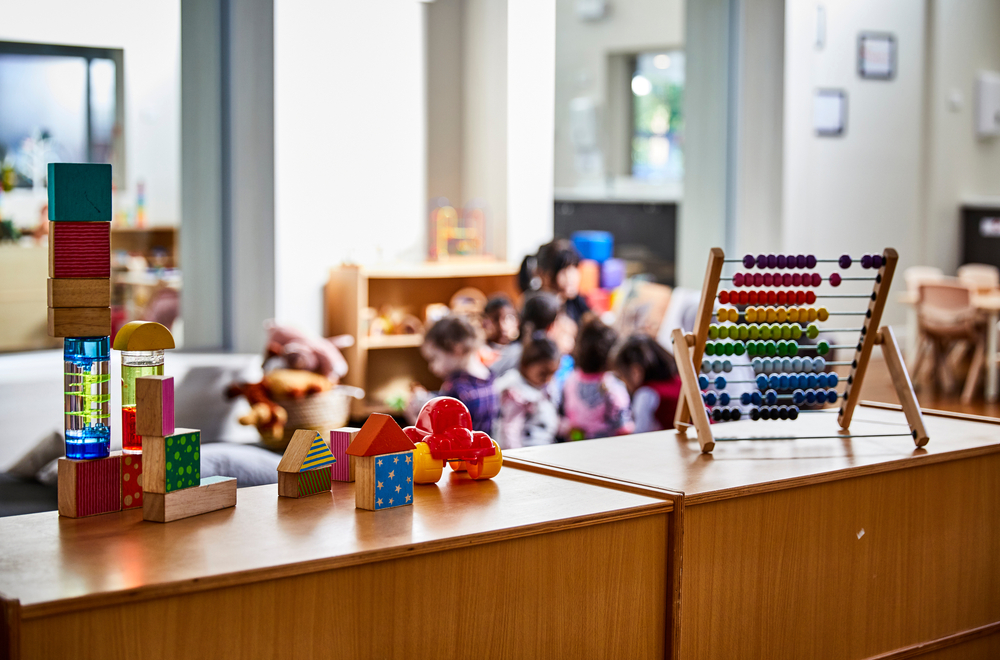The ACCC has examined the price and availability of childcare services, how households select childcare services and the impact of Government contributions in its interim report, published earlier last month.

It draws on information collected from a range of childcare providers around Australia as well as a national voluntary survey of more than 4,000 parents and guardians who use childcare services.
“Childcare plays a vital role in Australian society, with more than one million Australian families using childcare last year,” ACCC Chair Gina Cass-Gottlieb said.
“We have spent the past six months collecting information to gain insights into what is important to families when selecting and using childcare, and what factors contribute to the price and availability of childcare in different areas.”
“These are complex markets that are highly localised, with most families preferring to find childcare very close to their homes.”
During 2022, an estimated 1.275 million children aged 5 and under and 655,000 children aged 6-13 attended a childcare service. This represented 70 per cent of all 0-5 year old children and 25 per cent of all 6-13 year old children in Australia.
Childcare fees rising faster than inflation
ACCC analysis confirms that childcare fees rose faster than inflation and wage growth during the past four years, rising by between 20 per cent (for centre based day care and outside school hours care) and 32 per cent (for in home care).
Government subsidies meant that actual out-of-pocket expenses for households increased at a slower rate over the same period, the report found.
The ACCC found that government subsidies offset more than half of childcare fees on average. Even so, the report found that after subsidies, out-of-pocket expenses increased 7 per cent for households using centre based day care services during the past four years, by 12 per cent for households using outside school hours care and 15.8 per cent for households using family day care.
Disadvantaged households spend greater share of income on childcare
About half of households with the lowest incomes spend between 5 to 21 per cent of their disposable income on childcare despite receiving a greater government contribution and paying less out-of-pocket expenses. Half of households in the highest income bracket spend about 2 to 9 per cent of their disposable income on childcare.
“Critically, our analysis shows that the cost burden is felt most by households that are already facing disadvantage,” Ms Cass-Gottlieb said.
“Our inquiry will continue to examine why low income households are paying a greater share of their disposable income on childcare fees.”
Unlike other markets, the ACCC has observed that prices for childcare services in an area rise when there are more childcare providers. This may be due to parents prioritising location and quality of a childcare centre once they’ve decided how much care they can afford and will use.
The report also shows that larger centre based day care providers charge higher average daily fees than medium and small providers, and that for-profit centre based day care providers charge higher average fees than not-for-profit providers in the sector.
These fees are being charged for an increasing number of hours per child while actual hours attended have remained stable, or fallen.
Major changes to the Child Care Subsidy and hourly rate cap took effect on 10 July 2023. These changes may affect out-of-pocket expenses for households and fees charged by providers. The maximum subsidy rate increased from 85 per cent to 90 per cent and the maximum household income for households to receive the Child Care Subsidy increased significantly.
“We are currently collecting an extensive amount of data about the cost of providing childcare services and how fees are set, to help us further understand what drives prices, availability and quality in the childcare sector,” Ms Cass-Gottlieb said.
“We are closely examining the pricing behaviour of childcare operators during the current period as the changes to subsidies are applied so we can understand the reasons for price movements. We remind providers that they need to be transparent and honest about the reasons for any price changes.”
“Our analysis about pricing movements, including during this current period, will help shape our recommendations in this inquiry’s final report due at the end of the year,” Ms Cass-Gottlieb said.
More childcare spots in metropolitan and regional areas

About 97 per cent of childcare places are in centre based day care and outside school hours care.
The number of approved childcare places has increased by 17 per cent between 2018 and 2022, though this has not occurred uniformly across the country.
“The rise in approved childcare places is driven by an increase in services in metropolitan and regional areas, while the availability of family day care and in home care services, in contrast, is declining across the country,” Ms Cass-Gottlieb said.
“This report shows households face significant differences in fees, childcare options available and the quality of services, depending on where they live and their incomes.”
Despite the overall increase in approved places, some parents and guardians that completed the ACCC’s survey reported challenges when it came to finding childcare places.
Households on higher incomes and in areas of greater socio-economic advantage have access to more services, but this comes with higher prices.
Culturally and linguistically diverse families and households facing disadvantage are more likely to use family day care services than centre based day care, but are faced with a decreasing number of service providers and fewer available places.
Affordability influences use of childcare services but location and quality influence choice
“Childcare is a necessity for many working households and the efficient functioning of our economy. For parents and guardians, being able to access affordable childcare enables them to work, volunteer, train or study,” Ms Cass-Gottlieb said.
Preliminary results from the ACCC’s voluntary parents and guardians survey suggest that affordability is the most important threshold consideration for how much formal childcare to use. When out-of-pocket expenses become burdensome, households limit their use of childcare.
Access to the Child Care Subsidy helps many households afford some childcare but to receive the subsidy households must be taking part in approved activities including working, studying or volunteering. This requirement may mean some households are unable to access or use more childcare services.
Once households have decided how much childcare they want and can afford to use, parents and guardians appear to focus on considerations other than price when choosing a specific service.
“After parents and guardians have determined how much childcare they need and can afford, factors like location, availability and quality become central to their decision on which childcare provider to use,” Ms Cass-Gottlieb said.
Responses from the ACCC’s parents and guardian survey show that most households want childcare that is close to home and are willing to travel up to 15 minutes. Location, availability, safety and quality were all more commonly considered than price for centre based day care and family day care services.
Next steps
The ACCC has been working with childcare providers to gather information about the cost of providing services, what drives prices and how local markets operate. Building a cost database and undertaking detailed cost analysis is a key focus in the months ahead, as well as monitoring the early effect of the Government’s changes to the Child Care Subsidy.
A consultation paper will be published in September 2023. The consultation paper will include discussion of the cost of providing childcare and other issues outlined in the terms of reference. It will also identify a preliminary view on potential draft findings and recommendations. Interested parties will be invited to make submissions in response to the consultation paper.
A final report is due to the Treasurer by 31 December 2023.









